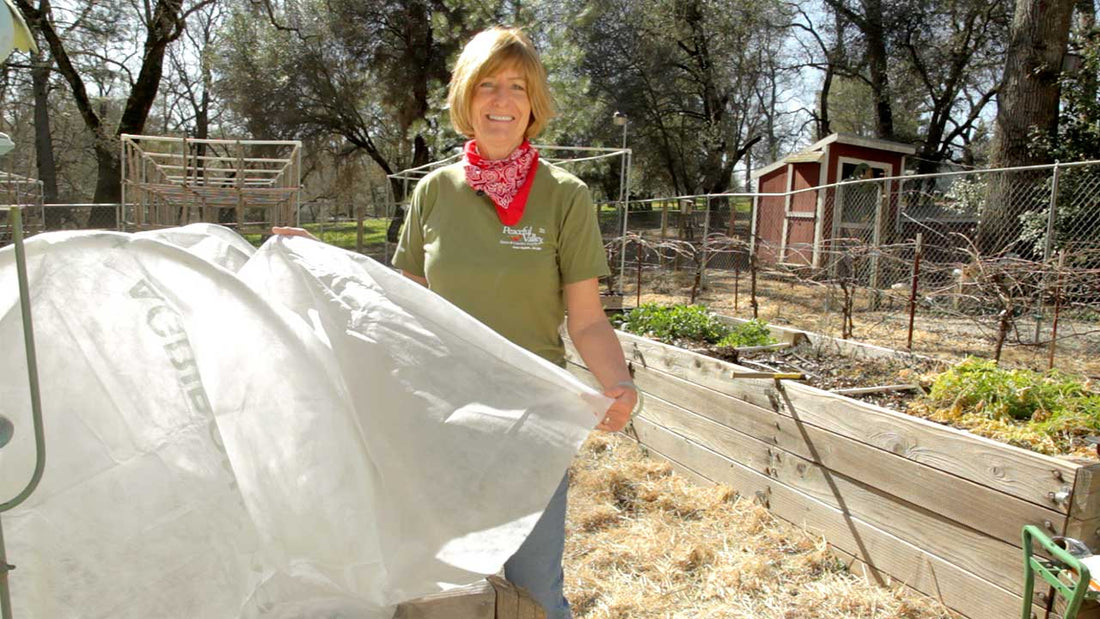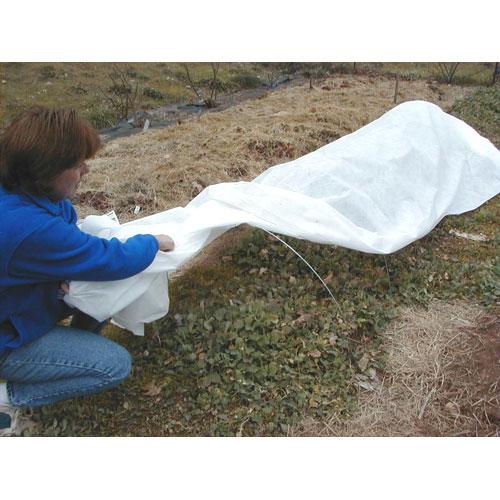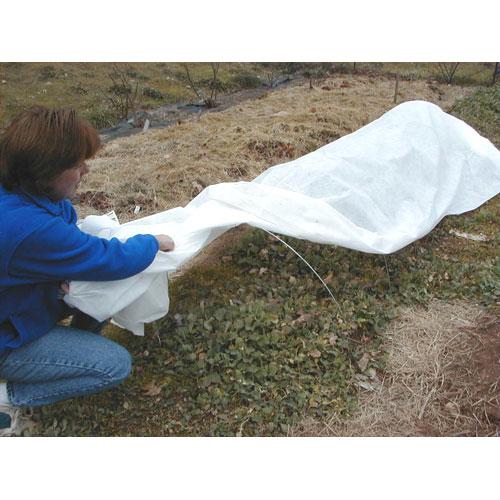How to Protect Your Garden Plants from Frost Using Low Tunnel Hoops
DIY row covers solve a multitude of gardening problems and will extend the growing season. Made of lightweight fabric, they allow sunlight, air, and water to pass through to your plants. Well known as "season extenders" to keep plants warm, these tools can also protect plants from insects, and even from too-strong sun in the summertime. These structures can be used over open spaces or raised beds.
In our video about light frost protection and direct seed sowing and our video on Planting Vegetables, Tricia uses Agribon row covers for warmth on newly planted seeds and transplants. Floating row covers and garden fabrics come in a range of weights and last for many seasons. From warmest to coolest, let's see which one suits your needs.
What is Agribon?
Agribon is a type of agricultural fabric that is used to protect crops from frost damage and pests. It is made from a lightweight, woven polypropylene material and typically comes in roll form. Agribon can be applied directly to the ground or over existing row covers and hoop houses. It is often used in conjunction with other crop protection methods, such as irrigation, as part of an integrated solution.
Check Your Frost Dates and Choose Product Based on Your Plants' Needs
For a cold snap, gardeners often think of these row covers and blankets when the weather report requires frost protection for leafy greens. That's the time to use our heavy covers. Agribon AG-50 covers and AG-50 frost blankets (1.5 oz. per square yard) let in 50% of the light and give from 6-8°F of frost protection (down to 24° F).
The Agribon AG-70 is the heaviest row cover, providing 8+°F of frost protection. Keeping you safe at 26 degrees If the cold won't drop below 26° F, take advantage of AG-30 row covers.
At 0.9 oz. per square yard they give warmth to your plants and transmit 70% of the sunlight. The balancing act is more sunlight, slightly less warmth.
Using Row Covers for Insect Control
Row covers are traditionally used for insect control in addition to their temperature benefits. The fabric is a shield against flying insects like thrips, aphids, and beetles. Our most popular weight (.55 oz. per square yard) in row covers is the Agribon AG-19. It gives some frost protection (down to 28° F), transmits 85% of the sunlight, and functions as a pest barrier too.
The University of California Integrated Pest Management program suggests placing row covers over seedlings to prevent insects from laying eggs. No frost trouble, but pests are an issue? If you want maximum light transmission (90%) and no added warmth, choose AG-15. Leave this lightweight (.45 oz per square yard) fabric on all growing season.
Hoop It Up
These structures are often called "hoop houses". Garden bed row covers got their name from being light enough to lie on top of plants without damaging them. Farmers and gardeners also use them with hoops as a rigid framework to hold up the row covers, trap heat and provide a UV-stabilized environment with shade cloth.
This can provide snow protection for covered plants too. We have all the fittings and clamps you need to build hoops and snap the row covers down at the base of the hoops. Just add PVC pipe and some rebar to anchor the hoop houses, and you are all set.
How Long Will Row Covers Last?
With proper care, most floating row covers will last for several seasons. Made of a lightweight fabric, floating row covers should be stored in a cool, dry place when not in use. Be sure to check the fabric for holes or tears before using it, and repair any damage as soon as possible. In addition, it's a good idea to wash your row covers periodically to remove any dirt or debris that could clog the fabric and reduce its effectiveness. With a little care, your floating row covers will provide many seasons of reliable protection for your garden.
Step-By-Step Instructions on Building Floating Row Covers
See our companion guide with all of the steps and materials you'll need for DIY floating row covers.
How did you ever garden or farm without these marvelous row covers? Protect your tender plants now, whatever the weather forecast.




3 comments
My husband and I used electrical conduit and created our own “bender” by screwing in 2 inch screws in ply wood along an arc and then bent the conduit. It works very well.
Kathy, all I know of is pipe made of metal, but you will need to have a tool to bend it in order to make a low tunnel. The Agribon is made with spun-bonded polypropylene.
I read a lot about the toxicity of PVC. I have cancer so am trying to reduce any environmental toxicity.
1-Do you know of any tubes that are not made of PVC material?
2- What is the cover fabric made of?
Thankyou.